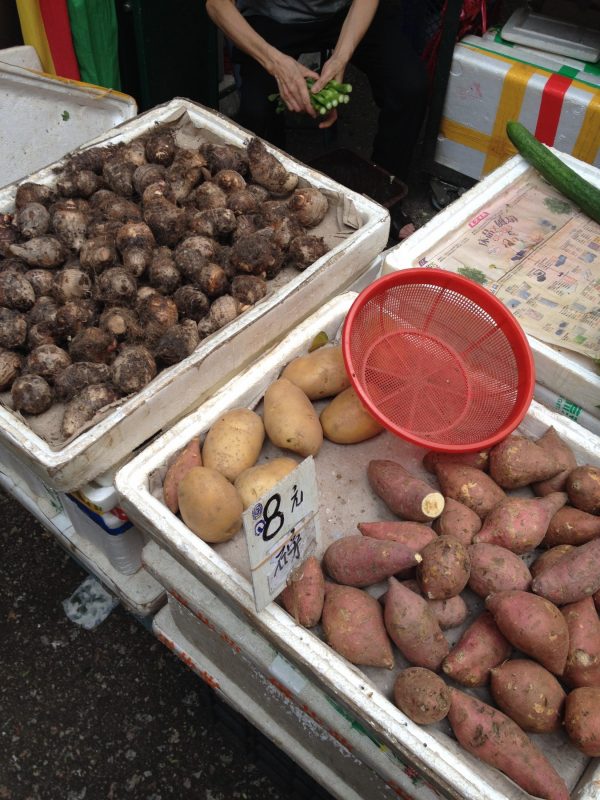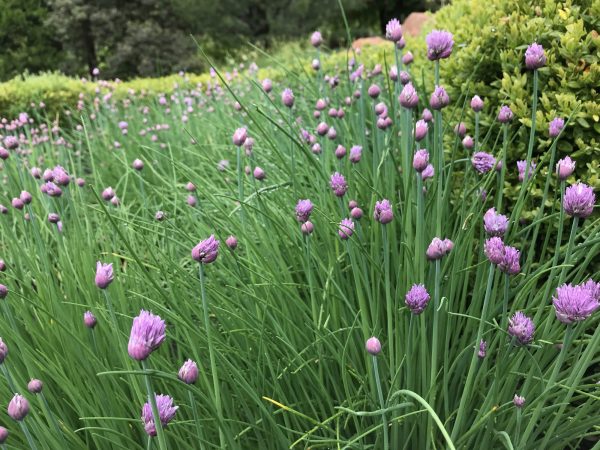Every day, without even realizing it, you come into contact with geophytes. By just walking around the grocery store, you pass by dozens of these plants — from onions and potatoes to amaryllis and tulips. But what exactly is a geophyte, and why are they important?

Florida Museum photo by Cody Coyotee Howard
1: What makes a geophyte a geophyte?
Geophytes are plants typically with underground storage organs, where the plants hold energy and water. A broad synonym for a geophyte is bulb, but they are far more diverse than that: Geophytes also include plants with tubers, corms or rhizomes. Many different kinds of plants have evolved these underground structures, and not all geophytes are related to one another. Some common geophytes include vegetables like carrots, ginger and garlic and flowers such as daffodils and hyacinths.
2: A geophyte’s storage organ is like a built-in disaster readiness kit.
The geophyte’s underground storage organ helps protect the valuable nutrients and water it holds inside. It also shelters its buds in the soil to protect them from environmental factors like heat, cold, fire, drought and animals. In this way, the plant prepares for adverse conditions, just as we prepare for things like hurricanes and tornadoes.

Florida Museum photo by Cody Coyotee Howard
3: Geophytes make for good eatin’.
The energy geophytes store is generally in the form of carbohydrates. One reason these plants are so tasty is because all of their nutrients are held in their storage organ, and that is the part we eat.
Geophytes are important to agricultural economies, and tuberous geophytes, which are those with a thickened part of either the stem or root, are valuable to the livelihoods of people across the globe.
“For example, hundreds of different varieties of potatoes are cultivated in Peru,” said Cody Coyotee Howard, a doctoral student at the Florida Museum of Natural History. “Similarly, yams are a major crop in many African countries.”
4: They’re also attractive.
Geophytes are also important to ornamental economies. Lilies and tulips dominate the industry, but as the nursery community diversifies and expands, new plants are starting to appear on store shelves across the country.
“When walking through a floral section at your local grocery store or farmers market, people are likely to encounter the above ground parts of geophytes – their flowers,” Howard said. “For example, an eclectic bouquet of tulips, lilies, dahlias and hyacinths would be entirely composed of geophytes.”

Florida Museum photo by Cody Coyotee Howard
5: Geophytes have their secrets.
There is still not much known about the evolutionary development of most underground organs, and detailed anatomical studies have shown that there are at least four bulb types, with each differing in bulb scale, leaf and flower development.
“We do not fully understand the anatomical and genetic mechanisms of their growth,” Howard said. “We also do not fully understand the anatomical relatedness of these structures to one another.”
He is working on research that looks at driving factors in geophyte evolution, including climate. One of his studies showed geophytes live in drier, cooler and more variable climates than non-geophytes.
Howard has also partnered with other researchers from the University of Florida; the National Autonomous University of Mexico; Cornell University; University of California, Berkeley; and Cambridge University to create a working group called Geophytic Organisms — Ontology & Phylogeny, or GOOPhy.
The group was created to bring interested scientists together and promote research on geophytes. They are currently working on improving the scientific community’s ability to consistently study, describe and collect the diverse underground structures of geophytes.
- Think plants are sedentary? Think again: Read about how geophytes can move underground.
- Curious why bulb size varies so widely, Howard researched the evolution and ecology of this trait, uncovering two ranges of “optimum” bulb diameter.